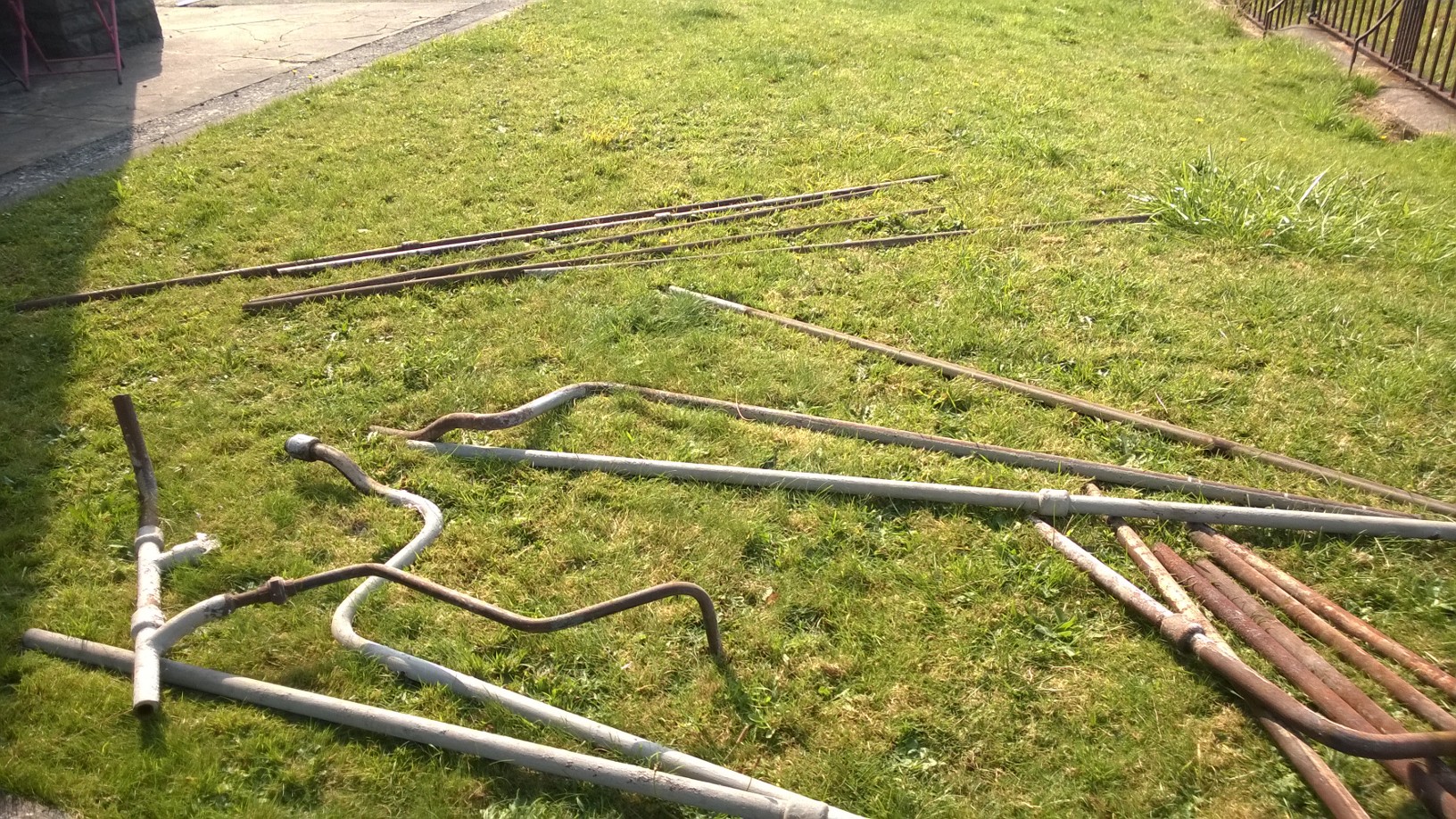
| Nazareth
Chapel Llwynhendy Carmarthenshire |
|
Nazareth is a Welsh
Calvanistic Methodist Chapel built in 1865.
Modifications were made in
1925.
The original warm air heating of the Chapel was supplied by a Musgrave warm air stove which is still extant. The Perkins HPHW pressurised heating system installed by Musgrave & Co of Cardiff was most likely installed during the later part of the Victorian period. |
4-pipe sinuous coil |
6-pipe sinuous coil |

| During
the 20th
Century the Perkins system was modified by the inclusion
of steel panel
radiators and the installation
of an oil fired boiler plant with pumped circulation.
The system was
also downgraded from pressurised to a LPHW by the
installation of a
feed and expansion tank. It is obvious that the Heating Contractor who carried out these modifications to the Perkins system had no idea what the design criteria was for a Perkins continuous single loop 3 circuit pressurised sytem. The modifications that were made, completely compromised the performance of the system, such that it would never prove effective in heating the Chapel. |
| The
fitting of steel
panel radiators in the Vestry would not have been
beneficial in
improving the heating output in
that area. These radiators are fitted with 20mm TBOE connections welded into the top pipe of sinuous coils. There would only be a minimal water circulation through the radiator due the very high resistance through the small bore hydraulic Perkins tubing. |

| The
removal of the
Perkins coal fired furnace and its replacement with an
oil fired boiler
and circulating pump fitted in the main return pipe
condemned the
heating system as unfit for use. The 3 circuit continuous single loop Perkins pipework in the Boiler room was cut and reconnected as three separate flow mains each with a gate valve to provide a very coarse means of balancing each circuit. The three return pipes were then connected together to form a common return to the boiler, with a small duty (domestic size) pump fitted into this common return pipe. This pump had no possibility of circulating water through small bore hydraulic tubing. If a larger duty pump had been fitted in each of the three flow pipes then this might have improved the circulation but never sufficient to effectively heat the Chapel. |

| It is
notably obvious
that
a total lack of understanding by the Heating Contractor
for the design
of the installed pipework system, made any modifications
useless in
improving the heating output of the system. The only way forward now to heat the Chapel to comply with current heating standards, is sadly for the removal of the Perkins pipework and its replacement with a conventional LPHW (open or sealed) pumped system with radiators.  Partial removal of the Perkins pipework |


